





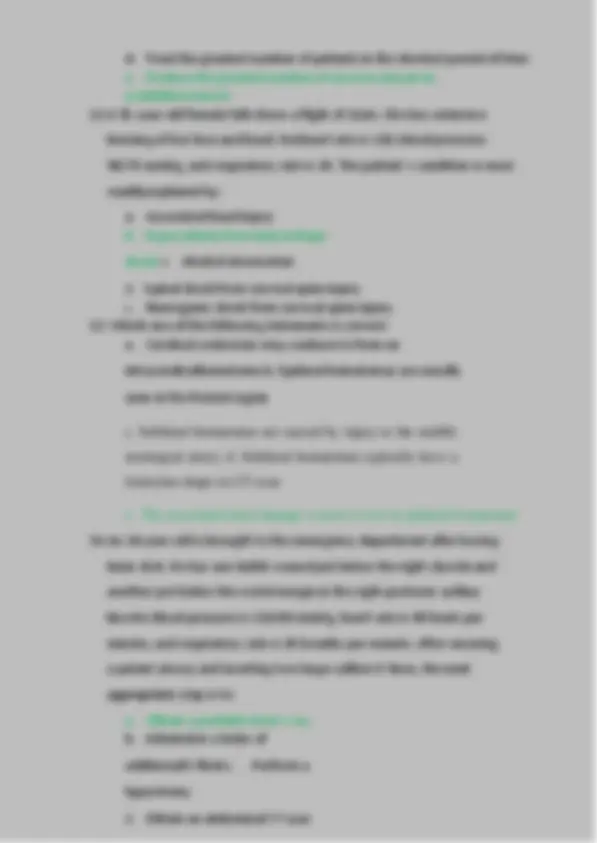
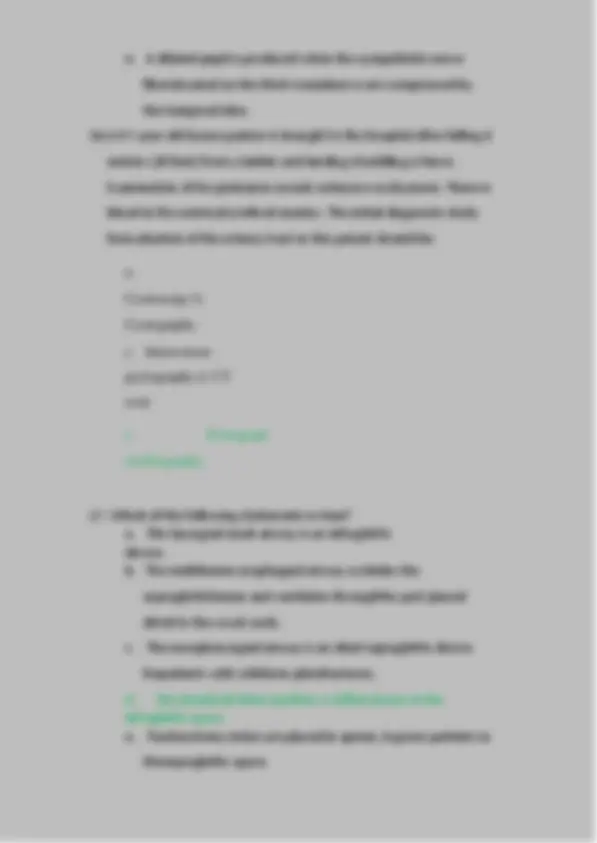

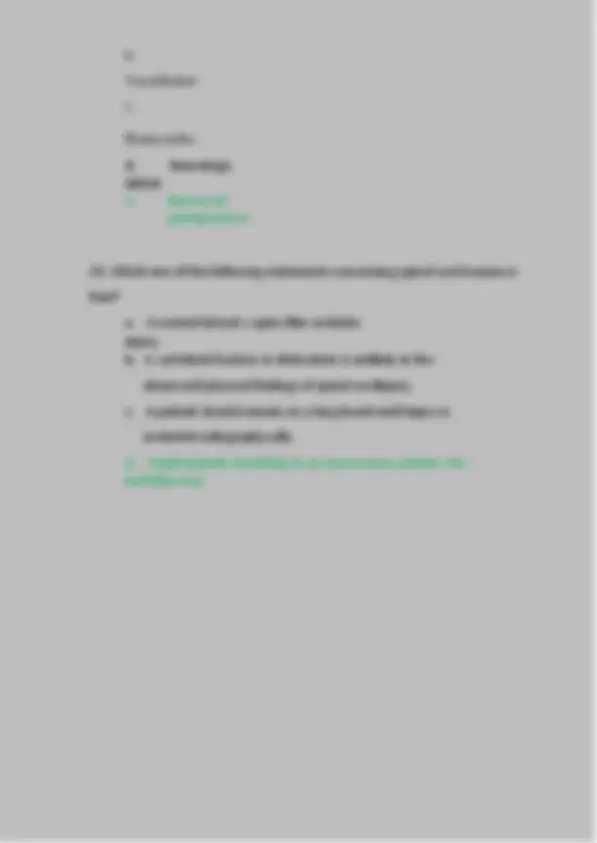

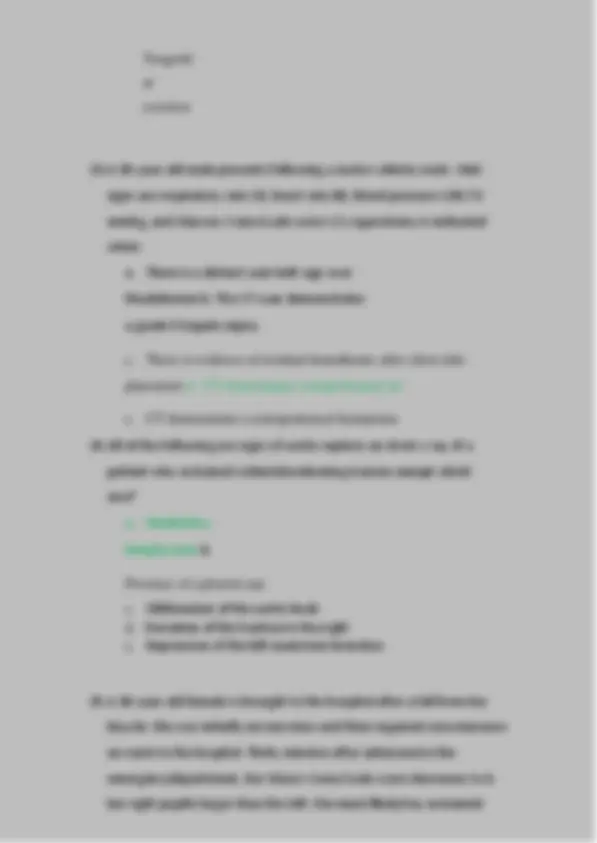

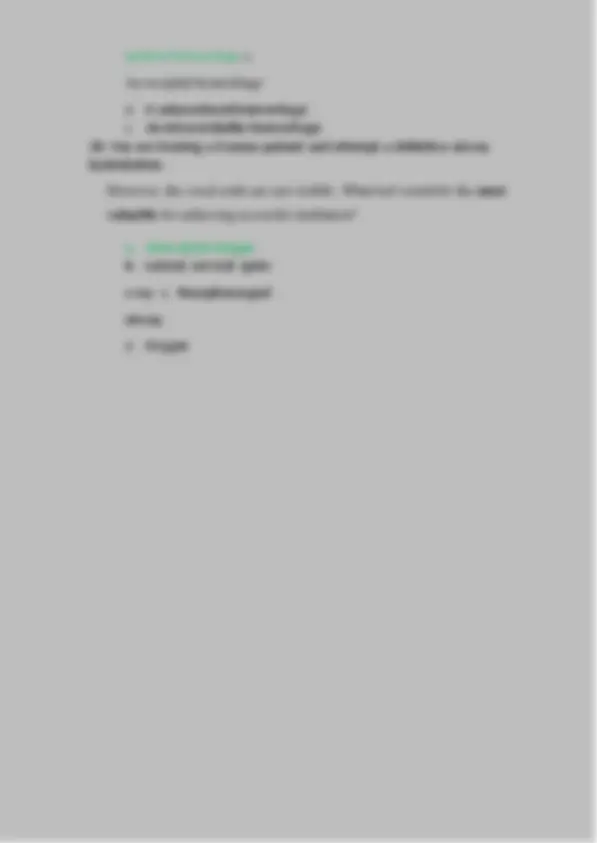



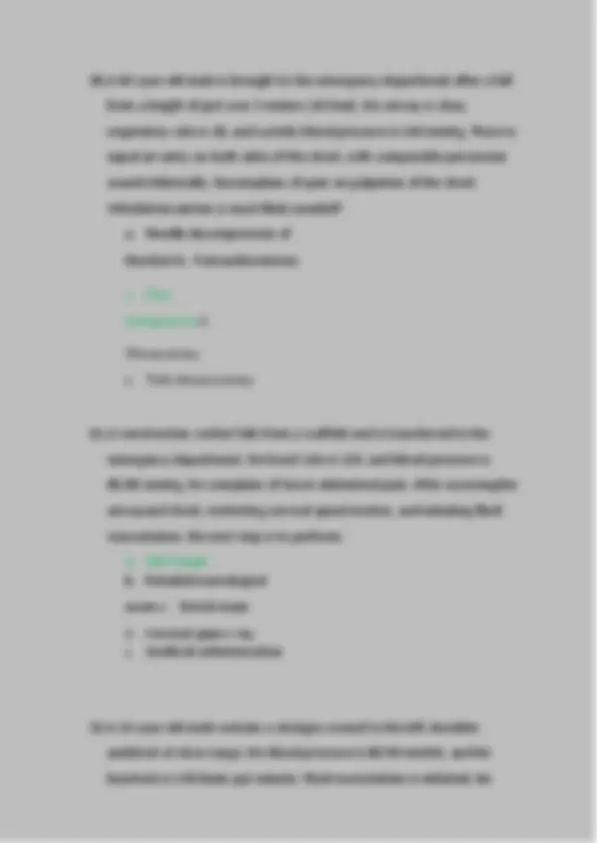

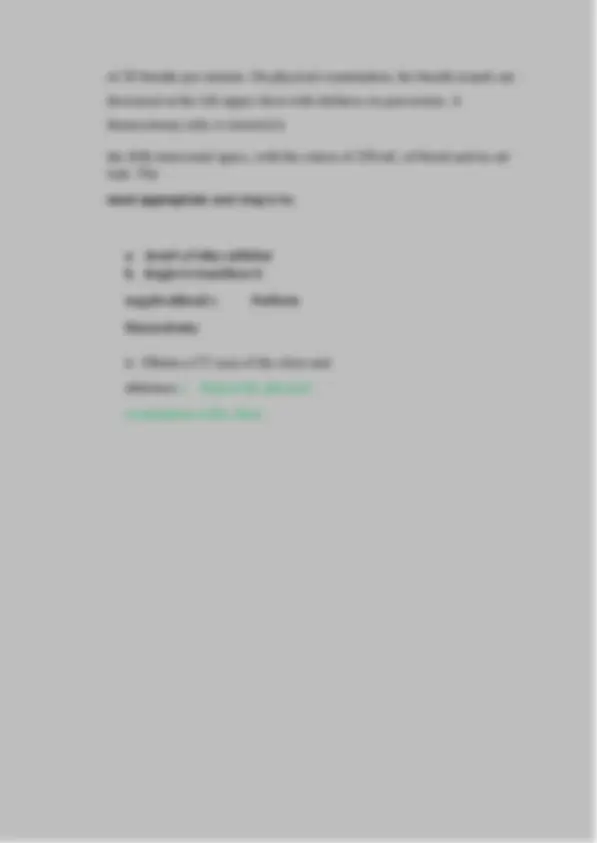








Study with the several resources on Docsity

Earn points by helping other students or get them with a premium plan


Prepare for your exams
Study with the several resources on Docsity

Earn points to download
Earn points by helping other students or get them with a premium plan
Community
Ask the community for help and clear up your study doubts
Discover the best universities in your country according to Docsity users
Free resources
Download our free guides on studying techniques, anxiety management strategies, and thesis advice from Docsity tutors
1. A 24-year-old male pedestrian, struck by an automobile, is admitted to the emergency department 1 hour after injury. His blood pressure is 80/60 mmHg, heart rate 140 beats per minute and respiratory rate is 36 per minute. He is lethargic. Oxygen is delivered via face mask, and two large-caliber IVs are initiated. Arterial blood gases are obtained. His PaO2 is 118 mmHg (15.7 kPa), PaCO2 is 30 mmHg (4.0 kPa), and pH is7.21. The treatment of his acid-base disorder is best accomplished by: a. Hyperventilation b. Restoration of normal perfusion c. Initiation of lowdose dopamine
Typology: Exams
1 / 33

This page cannot be seen from the preview
Don't miss anything!


























closed tube thoracostomy is performed, with the return of 200 ml of blood. A chest x- ray reveals correct placement of the chest tube and a small residual hemothorax. His blodd pressure is now 70/0 mmHg, and his heart rate is 140 beats per minute. His hypotension is mostlikely due to: a. Tension pneumothorax b. Massive hemothorax c. Pericardial tamponade d. Intraabdominal bleeding e. Insufficient isotonic crystalloid infusion
c. Greater mobility of mediastinal structures d. A relatively smaller head and larger jaw e. Anterior displacement of C5 on C
d. Treat the greatest number of patients in the shortest period of time e. Produce the greatest number of survivors based on availableresources 12.A 35-year-old female falls down a flight of stairs. She has extensive bruising of her face and head. Herheart rate is 120, blood pressure 90/70 mmHg, and respiratory rate is 26. The patient`s condition is most readilyexplained by: a. Associated head injury b. Hypovolemia from hemorrhagic shock c. Alcohol intoxication d. Spinal shock from cervical spine injury e. Neurogenic shock from cervical spine injury
e. Perform diagnostic peritoneal lavage
e. A dilated pupil is produced when the sympathetic nerve fiberslocated on the third cranialnerve are compressed by the temporal lobe. 16.A 47-year-old house painter is brought to the hospital after falling 6 meters (20 feet) from a ladder and landing straddling a fence. Examination of his perineum reveals extensive ecchymosis. There is blood in the external urethral meatus. The initial diagnostic study forevaluation of the urinary tract in this patent should be: a. Cystoscopy b. Cystography c. Intravenous pyelography d. CT scan e. Retrograde urethrography
indicate cervical spinalcord injury. e. Determination of wether a spinal cord lesion is complete orincomplete must be made in the primary survey. 20.Which one of the following statements is false concerning Rh isoimmunization in pregnant traumapatient? a. It occurs in blunt penetrating abdominal trauma b. It is produced by minor degree of fetomaternal hemorrhage c. Rh immuniglobulin therapy should be administered to pregnantfemales who have sustaineda gunshot wound to the leg d. Isoimmunization is not a problem in Rh-positive pregnant patients e. Initiation of Rh immunoglobulin therapy does not require proof of fetomaternal hemorrhage 21.An 18-year-old motorcyclist collides head-on with a pick-up truck and sustains massive facial injuries. In the emergency department his blood pressure is 150/88 mmHg, heart rate is 88 beats per minute andregular, and respiratory rate is 26 breaths per minute. His respirationsare labored and sonorous. His Glascow Coma Scale score is 7. Attempts at orotracheal intubation with restricition of cervical spinal motion are unsuccessful due to bleeding and distorted anatomy. The patient becomes apneic. The best procedure for airway management in this situation is: a. Nasotracheal intubation b. Emergency tracheostomy c. Surgical cricothyroidotomy d. Placement of an oropharyngealairway e. Placement of an nasopharyngeal airway
22.A 25-year-old male is brought to the hospital after sustaining partial-and full- thickness burns involving 60% of his body surface area. General surgical services are available. His right arm and hand are
Tangenti al excision 23.A 30-year-old male presents following a motor vehicle crash. Vital signs are respiratory rate 18, heart rate 88, blood pressure 130/ mmHg, and Glascow Coma Scale score 13. Laparotomy is indicated when: a. There is a distinct seat-belt sign over theabdomen b. The CT scan demonstrates a grade 4 hepatic injury c. There is evidence of residual hemothorax after chest tube placement d. CT demonstrates retroperitoneal air e. CT demonstrates a retroperitoneal hematoma 24.All of the following are signs of aortic rupture on chest x-ray of a patient who sustained a bluntdecelerating traume except which one? a. Mediastina lemphysema b. Presence of a pleural cap c. Obliteration of the aortic knob d. Deviation of the trachea to the right e. Depression of the left mainstem bronchus 25.A 30-year-old female is brought to the hospital after a fall from her bicycle. She was initially unconscious and then regained consciousness en route to the hospital. Thirty minutes after admission to the emergencydepartment, her Glasoc Coma Scale score decreases to 6. her right pupilis larger than the left. She most likely has sustained:
a. A subdural hemorrhage b. An